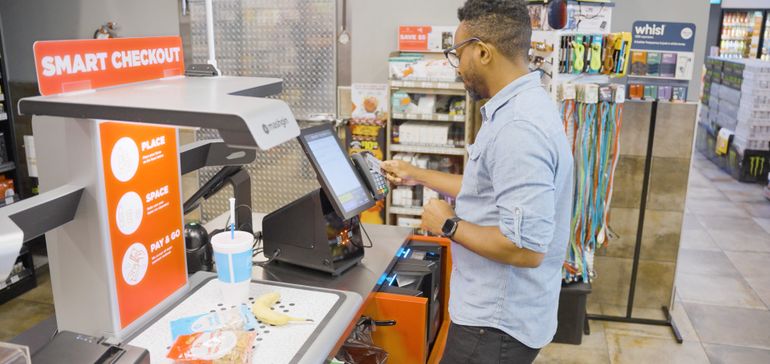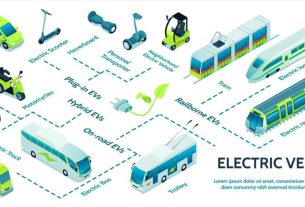[ad_1]
This story is the third in a series on key trends that will impact c-stores in 2023.
The return of in-person shopping over the past year or so has cast a spotlight on the store experience for retailers across various channels. But according to design expert Michael Lawshe, many c-stores haven’t kept pace with evolving consumer expectations.
Too many stores, he said, have focused over the years on maximizing the number of products they can fit onto their retail floors. The result is an experience that offers everything consumers need — but that often feels “jumbled up” and “doesn’t flow,” said Lawshe, president of c-store design firm Paragon Solutions.
But this year, c-store operators will at least begin making store design changes that focus less on assortment and more on other areas like shopping flow, efficiency and aesthetics, he noted.
“I do see the more intentional, intellectual design coming to the forefront,” said Lawshe.
Experts expect c-stores to continue iterating on services and innovations that have been introduced within the past few years, all in the name of offering a better customer experience. This comes as the number of c-stores in the U.S. grew for the first time in four years and major chains are extending into new markets while other chains, like Mapco and Stewart’s Shops, are opening new locations and investing in site refreshes.
“Our industry is in the midst of an evolution, not a revolution,” said Lawshe.
That evolution includes the growing role of convenience stores as a place to browse, relax or dine. Jennifer Perron-Micek, vice president of marketing and innovation for retail services firm Marmon Retail Solutions, said stores need to think about how customer expectations are changing, and explore novel ways draw customers into stores and drive repeat visits, be that increasing the convenience factor, offering more healthy options or rethinking the interior.
“Where before it was just a convenience store, now it’s a market,” Perron-Micek said. “Before it was the local gas station. Now it’s a fast-food experience.”
Moving beyond maximizing SKUs
Lawshe said successful, modern c-store designs are focused on getting customers to “linger longer.”
“It’s easy to look at a small piece of the puzzle and say, ‘What am I going to do in this 100-square-foot area?’” said Lawshe. “That’s really just a Band-Aide. You have to pull yourself away and look at the entire customer experience.”
Stores will continue moving to less cluttered designs as well. Mapco, for instance, is remodeling old stores and building new ones to fit with its “Store of the Future” design, which incorporates aspects like a more open floor plan and self checkout. The updated design also includes tech enhancements like mobile scan-and-go checkout as well as more spacious bathrooms.
Perron-Micek also called out Kwik Trip and 7-Eleven for embracing this more customer-friendly aesthetic.
“It’s more upscale … coffee bar elements, WiFi, areas for people to do work,” said Perron-Micek. “There’s an opportunity to create consistency, but something that is open and inviting to customers.”
Chris Pratt, executive vice president of strategy and development with retail branding and merchandising company Big Red Rooster Flow, said he sees self checkout, like the program being rolled out by Parkland USA, continuing to gain traction in 2023.
Pratt’s company has been working with Circle K on installing its computer-vision self-checkout machines into some locations. He noted that age-restricted items are the one big hiccup, given how tobacco and alcohol make up a large percentage of c-store sales.
“I don’t think the self checkout systems have licked that problem yet,” he said, adding, “Maybe they’ll be able to tackle that in the future.”
Lawshe also mentioned that stores will begin thinking more about the specific needs of self-checkout customers.
“What does [that customer] need?” Lawshe asked. “He needs a little more space to put his stuff down, scan, bag, and so it’s a different process.”
One big design change that owes a lot to pandemic concerns is a move toward better bathrooms.
“Clean, functioning restrooms in general,” Pratt said, noting that Circle K has also been enhancing this aspect of their stores. “But also moving towards more and more touchless [technology].”
Some features Pratt has seen installed in bathrooms meant to augment motion-activated appliances include zigzag entrances and foot pulls, both of which eliminate the need to touch a door.
All 23 Foxtrot locations include some outdoor seating
Permission granted by Foxtrot
An inviting forecourt
As c-stores become more of a destination rather than a gas-and-go stop, Lawshe said companies may want to rethink how they do even simple things, like parking.
“When [customers] pull onto the lot, is it easy to get to the parking that they want, or do they have to fight through the gas traffic to get there?” he asked.
He also pointed out that while there are legal minimums for the size of parking spaces, companies may want to consider making them larger, to make the store more inviting for customers.
Pratt said he thinks 2023 will also bring more of a push toward self branding for the smaller, independent c-store operators. He said that some stores have historically been overshadowed by the name on the gas canopy, leading to people thinking of them in terms of the gasoline on offer, instead of the c-store.
“They still use those terms: ‘I’m gonna run over to the Shell and grab a soft drink,’” he said. “Well, you’re really not getting anything from Shell. They don’t sell soft drinks.”
As stores increasingly lean into foodservice and loyalty programs, Pratt said he expects to see more locations attempt to strengthen their personal branding and “create homogeny, between the backcourt and the forecourt.”
Outdoor seating is also increasingly common among c-stores. For example, Chicago-based Foxtrot has open-air dining areas in all 23 of its locations, according to a spokesperson.
“We’re doing, depending on the location, more outdoor seating, more dog parks within the outdoor seating,” said Lawshe. “Again, [getting customers to] linger longer.”
And parks aren’t just for dogs. Perron-Micek said that while she has not worked with any companies that ended up implementing them, potential designs including child play areas have been coming up more often.
Another big forecourt trend is electric vehicle charging. While experts see more stores adding EV charging in 2023, Pratt expects to see more c-stores start thinking about EV charging the way they do about fueling now — making sure they’re under canopies, are well lit and provide direct and easy access to the convenience store.
“At this point in the game, EV drivers are more affluent, as a generality,” Pratt said. “If so, why are we relegating them off to the side?”
He added that while he hasn’t seen it yet, he wonders if c-stores in areas with high EV adoption may begin to replace some of their fuel pumps with EV chargers and start putting their charging prices on their price signs.
Several experts also brought up how many c-store chains, like Love’s Travel Stops & Country Stores, are using Amazon pickup lockers as another way to draw customers onto the site. That amenity has an opportunity to expand.
“They’ve got a lot of lockers in a lot of convenience stores,” said Pratt. “But I would imagine there will be a movement towards [Amazon] return facility services as well.”
[ad_2]
Source link



